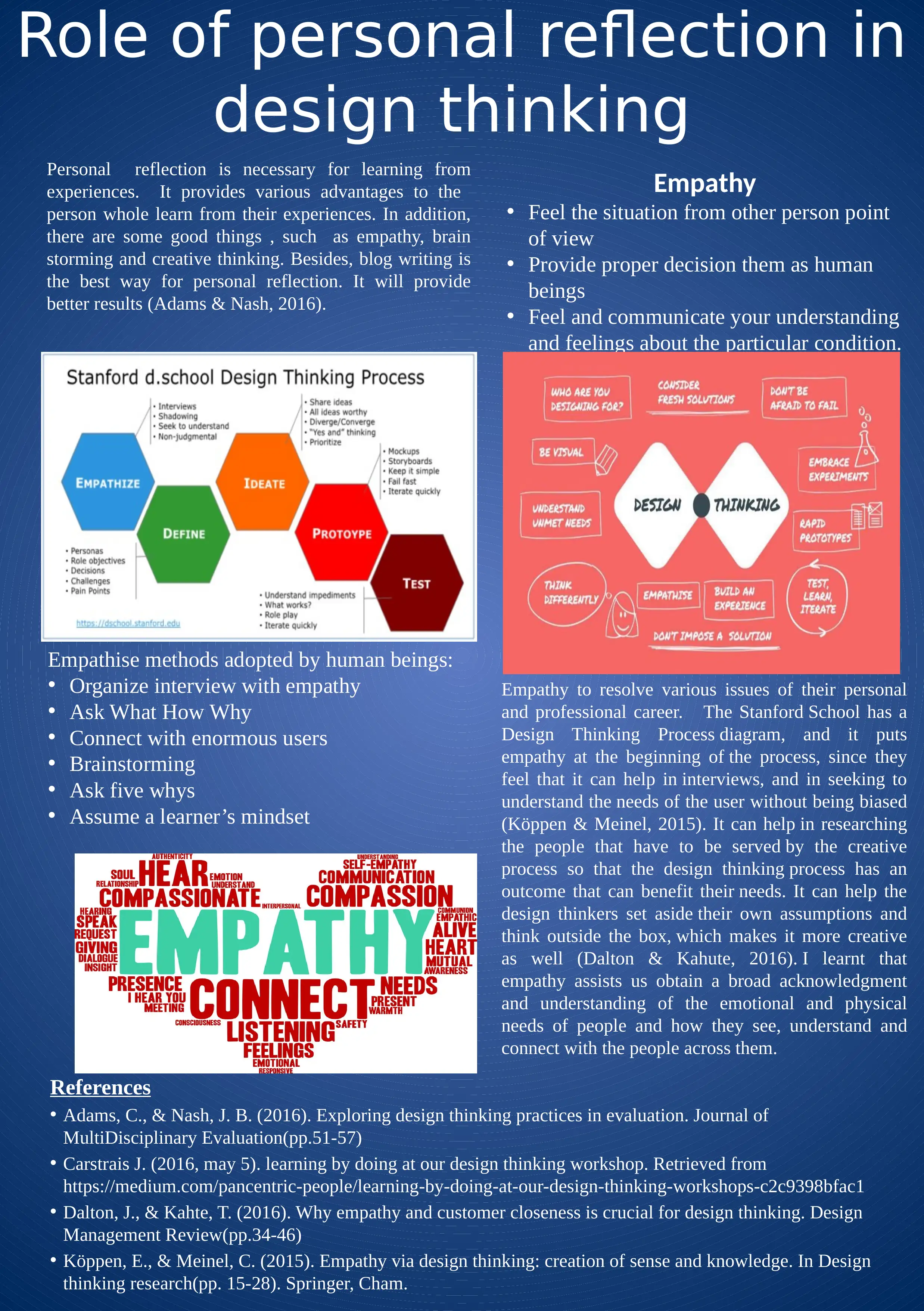Design Thinking and Personal Reflection: A Deep Dive into the Process
VerifiedAdded on 2022/10/04
|1
|414
|13
Report
AI Summary
This report examines the crucial role of personal reflection and empathy in design thinking. It highlights the benefits of incorporating personal reflection, such as enhanced empathy, brainstorming, and creative thinking, to improve the design process. The report references various studies and sources, including Adams & Nash (2016), Carstrais (2016), Dalton & Kahte (2016), and Köppen & Meinel (2015), which emphasize the importance of understanding user needs and the value of empathy in the design process. The report explains how the design thinking process, as exemplified by the Stanford School's model, prioritizes empathy to understand user needs and avoid biases. Furthermore, it discusses practical methods for fostering empathy, such as conducting interviews and adopting a learner's mindset. The conclusion underscores the importance of personal reflection in fostering a deep understanding of user perspectives and driving innovative solutions.






![[object Object]](/_next/static/media/star-bottom.7253800d.svg)